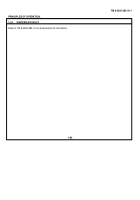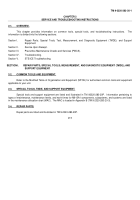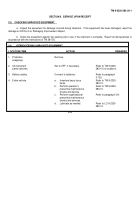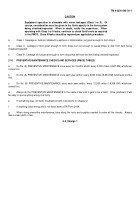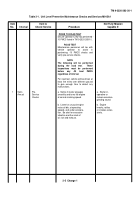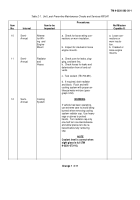TM-9-2320-283-20-1 - Page 116 of 926
TM 9-2320-283-20-1
SECTION III.
PREVENTIVE MAINTENANCE CHECKS AND SERVICES (PMCS)
2-7.
PREVENTIVE MAINTENANCE CHECKS AND SERVICES (PMCS) INTRODUCTION.
This section contains Unit
PMCS requirements for the M915A1 vehicle.
The PMCS tables contain checks and services necessary to ensure the
vehicle is ready for operation.
Using the PMCS tables, perform maintenance at the specified intervals.
Preventive
Maintenance Checks and Services in TM 9-2320-283-10 must be completed before doing Unit preventive maintenance.
2-8.
MAINTENANCE FORMS AND RECORDS.
Every mission begins and ends with paperwork.
There is not much of
it, but it must be kept up.
The filled out forms and records have several uses.
They are a record of the services, repairs,
and modifications made on the vehicle; they are reports to unit maintenance and to the Commander; and they serve as a
checklist to find out what is wrong with the vehicle after its last use, and whether those faults have been fixed.
For
information needed on forms and records, see DA PAM 738-750.
2-9.
GENERAL MAINTENANCE PROCEDURES.
WARNING
Adhesives, solvents, and sealing compounds can burn easily, can give off harmful vapors, and are
harmful to skin and clothing.
To avoid injury or death, keep away from fire and use in well-
ventilated area.
If adhesive, solvents, or sealing compound get on skin or clothing, wash
immediately with soap and water.
a.
CLEANLINESS.
Dirt, grease, oil and debris only get in the way and may cover up a serious problem.
Use dry
cleaning solvent on metal surfaces and soapy water on rubber.
b.
BOLTS, NUTS, AND SCREWS.
Check bolts, nuts, and screws for obvious looseness, missing, bent, or broken
condition and tighten or replace as necessary.
They cannot all be checked with a tool, of course, but look for chipped
paint, bare metal, or rust around bolt heads.
c.
WELDS.
Look for loose or chipped paint, rust, or gaps where parts are welded together.
If a bad weld is found,
have it repaired.
d.
ELECTRIC WIRES AND CONNECTORS.
Look for cracked or broken insulation, bare wires, and loose or broken
connectors.
Tighten loose connectors and make sure the wires are in good shape.
e.
HYDRAULIC LINES AND FITTINGS.
Look for wear, damage, leaks, and make sure clamps and fittings are tight.
Wet spots show leaks, of course, but a stain around a fitting or connector may indicate a leak.
If a connector or fitting is
loose, tighten it.
If something is broken or worn out, repair or replace per applicable procedure.
2-10.
FLUID LEAKAGE.
It is necessary to know how fluid leakage affects the status of fuel, oil, coolant, and the
hydraulic systems.
The following are definitions of types/classes of leakage necessary to know in order to determine the
status of the vehicle.
2-3
Change 1
Back to Top








